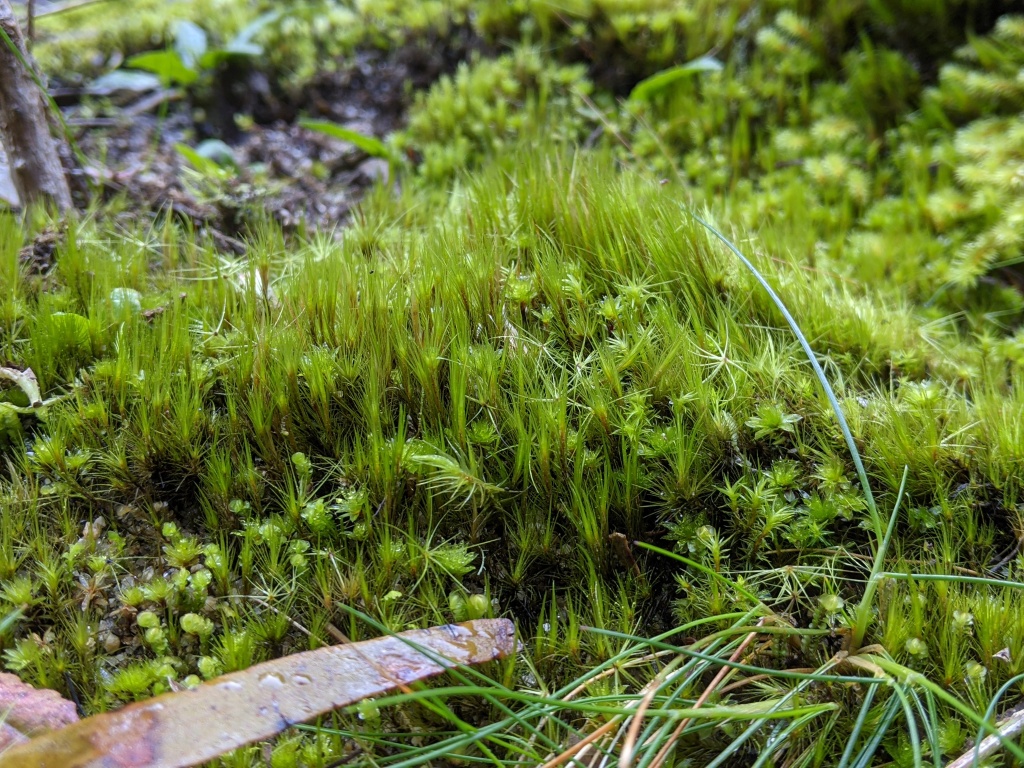Campylopus torquatus
Mitt.Dioicous. Turfs on soil or rocks, light green. Stems to 1–3 cm tall, uniformly foliate, red- or dark brown to black, with scattered pale brown rhizoids. Leaves erecto-patent to homomallously curved or curved outwards when moist, erect to erecto-patent with the tips curved in all directions when dry, ovate-subulate, 4.3–8.2 mm long, 0.3–1 mm wide; apex concolorous or, occasionally, with a short hyaline point; costa occupying c. 40–60% of leaf width; margins entire, plane; laminal cells in apical half quadrate to rectangular, 6–30 μm long, 5–8 μm wide, not pitted; basal laminal cells rectangular, 15–75 μm long, 5–30 μm wide, hyaline throughout, including above alar region; alar cells hyaline, inflated, not or poorly differentiated. Seta 4–9 mm long, yellow to brown, smooth, not twisted. Capsule inclined to pendent, ovoid or ellipsoid, 0.6–1.3 mm long, straight or curved, yellow to yellow-brown, sulcate when dry. Operculum rostrate from conic base, 0.6–1 mm long. Peristome Campylopus-type.
Wim, EGL, EGU, HSF, HNF, OtR, MonT, VAlp. New Zealand. In Victoria mostly along and south of the Great Dividing Range in a wide variety of habitats including among rock outcrops, sclerophyll forest, beside creeks or in grassland in the alpine zone.
The names Campylopus fragilis (Brid.) Bruch & Schimp. and C. pyriformis (Schultz) Brid. have been misapplied to C. torquatus. Australian C. torquatus populations (identified as C. fragilis and C. pyriformis) were not shown to be closely related to C. fragilis and C. pyriformis from outside of Australia in the phylogenies of Stech & Wagner (2005) that were based on chloroplast and nuclear DNA sequences. Campylopus torquatus can have a hyaline hairpoint at the apex, unlike both C. fragilis and C. pyriformis (Klazenga 2012).
 Spinning
SpinningSynonyms
Misapplications
Klazenga, N. (2012). Australian Mosses Online. 35. Leucobryaceae: Campylopus. http://www.anbg.gov.au/abrs/Mosses_online/Leucobryaceae_Campylopus.pdf.
Stech, M.; Wagner, D. (2005). Molecular relationships, biogeography, and evolution of Gondwanan Campylopus species (Dicranaceae, Bryopsida). Taxon 54: 377–382.

